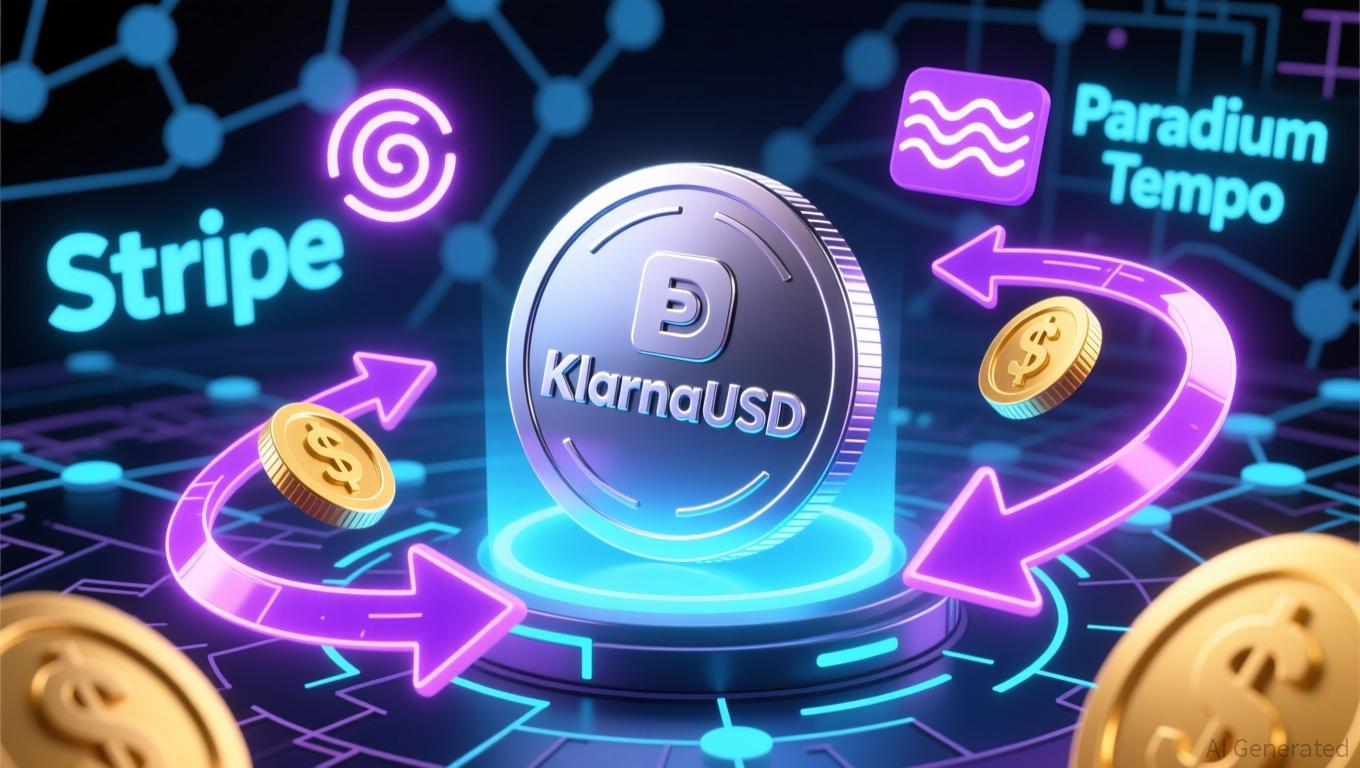Klarna Introduces Stablecoin to Reduce $120 Billion in International Payment Charges
- Klarna launches KlarnaUSD, a USD-backed stablecoin on Stripe/Paradigm's Tempo blockchain to challenge traditional cross-border payment networks. - Aims to cut $120B in annual fees by offering faster, cheaper transactions via Tempo's payment-optimized infrastructure. - CEO Sebastian Siemiatkowski's crypto pivot aligns with $27T stablecoin market growth and regulatory frameworks like the U.S. GENIUS Act. - Partnership with Stripe's $1.1B-acquired Bridge platform and $5B-valuation Tempo underscores fintech'
Swedish fintech powerhouse

This initiative marks a significant turnaround for Klarna CEO Sebastian Siemiatkowski, who was once skeptical of crypto but now champions its advantages. “Crypto has reached a point where it is efficient, cost-effective, secure, and scalable,” he said, highlighting that Klarna’s 114 million users and $118 billion in yearly gross merchandise value (GMV) put the company in a strong position to “take on traditional networks”
Klarna’s collaboration with Stripe builds on a longstanding partnership across 26 countries. The stablecoin utilizes Open Issuance by Bridge, a Stripe subsidiary acquired for $1.1 billion earlier this year. Since its launch in September, Tempo has secured $500 million in funding and is valued at $5 billion,
On the financial front, Klarna enters the stablecoin competition with robust liquidity. Despite generating $3.2 billion in revenue over the past year and trading near its 52-week low, the company’s current ratio of 29.46 allows room for innovation. Its latest third-quarter report revealed
This launch is also in step with wider industry trends. PayPal and Stripe have already rolled out their own stablecoins, and clearer regulations in the U.S. and Europe have attracted more institutional players. JPMorgan recently noted that Circle’s
Disclaimer: The content of this article solely reflects the author's opinion and does not represent the platform in any capacity. This article is not intended to serve as a reference for making investment decisions.
You may also like
Strategy unveils a new anti-panic weapon against the bitcoin crisis

dYdX’s performance-driven affiliate system establishes a new benchmark for DeFi rewards
- dYdX's v9.4 upgrade introduces a performance-based 50% commission tier, replacing static VIP tiers with dynamic affiliate fees tied to real-time trading volume. - The sliding fee model automatically adjusts commissions (30% base, 50% for top performers) to align affiliate rewards with platform liquidity and growth goals. - Competitors like Bitget and YWO also adopt performance-driven affiliate strategies, reflecting a broader DeFi trend toward merit-based incentives. - dYdX's protocol-level hard-coding o
The Growth of Ready-to-Develop Infrastructure in Upstate New York and Its Influence on Industrial Property
- Upstate NY's industrial real estate is transforming via shovel-ready infrastructure and public-private partnerships, targeting advanced manufacturing and clean energy sectors. - FAST NY's $400M grant program has funded 37 projects since 2022, upgrading 7,700 acres to attract $283M+ in private investments like Chobani's regional operations. - Webster's Xerox campus redevelopment ($9.8M FAST NY grant) exemplifies mixed-use "bluefield" models combining manufacturing with residential zones to create sustaina

Bolivia eyes crypto and stablecoins to fight inflation and US dollar shortage
